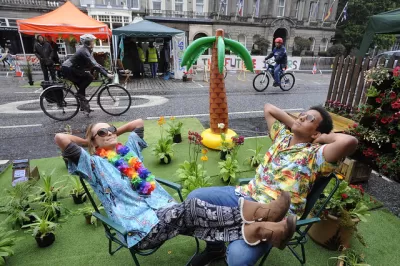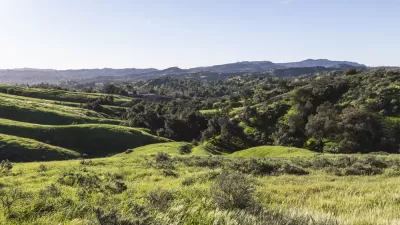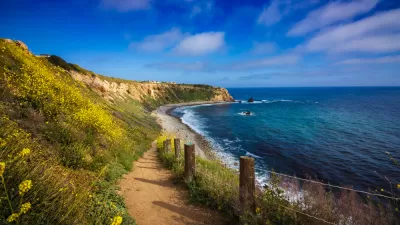A new study finds that interim recreational use of underutilized sections of crowded cities can benefit more than just humans.

Adina Solomon shares news of research recently published in the Environment International journal that finds evidence of the health, social, and environmental benefits of urban green space, and makes the case for interventions that create new urban green space, even if just temporarily.
Solomon explains:
Sometimes, cities lack large greenspace not only for people but for wildlife — the insects, birds and other animals that make for a balanced ecosystem.
One answer to this issue? Pop-up parks, according to a new study examining their effects on biodiversity.
Luis Mata, ecologist with the People, Nature, Place research program at Royal Melbourne Institute of Technology University’s Centre for Urban Research, and team examined the Grasslands, a six-week park in Melbourne.
"Like many pop-up parks, Grasslands is not what many people envision when they think of greenspace," according to Solomon. But the park showed significant biodiversity in its insect and spider population, which means benefits for pollination and nutrient cycling.
To further exemplify some of the concepts and outcomes under examination by Mata's research, Solomon also cites the example of the Pop-Up Urban Park in Wichita, Kansas.
FULL STORY: Pop-Up Parks Lead to More Biodiversity in Cities, Study Finds

Maui's Vacation Rental Debate Turns Ugly
Verbal attacks, misinformation campaigns and fistfights plague a high-stakes debate to convert thousands of vacation rentals into long-term housing.

Planetizen Federal Action Tracker
A weekly monitor of how Trump’s orders and actions are impacting planners and planning in America.

In Urban Planning, AI Prompting Could be the New Design Thinking
Creativity has long been key to great urban design. What if we see AI as our new creative partner?

San Francisco Mayor Backtracks on Homelessness Goal
Mayor Dan Lurie ran on a promise to build 1,500 additional shelter beds in the city, complete with supportive services. Now, his office says they are “shifting strategy” to focus on prevention and mental health treatment.

How Trump's HUD Budget Proposal Would Harm Homelessness Response
Experts say the change to the HUD budget would make it more difficult to identify people who are homeless and connect them with services, and to prevent homelessness.

The Vast Potential of the Right-of-Way
One writer argues that the space between two building faces is the most important element of the built environment.
Urban Design for Planners 1: Software Tools
This six-course series explores essential urban design concepts using open source software and equips planners with the tools they need to participate fully in the urban design process.
Planning for Universal Design
Learn the tools for implementing Universal Design in planning regulations.
Gallatin County Department of Planning & Community Development
Heyer Gruel & Associates PA
JM Goldson LLC
Mpact (founded as Rail~Volution)
City of Camden Redevelopment Agency
City of Astoria
Jefferson Parish Government
Camden Redevelopment Agency
City of Claremont





























